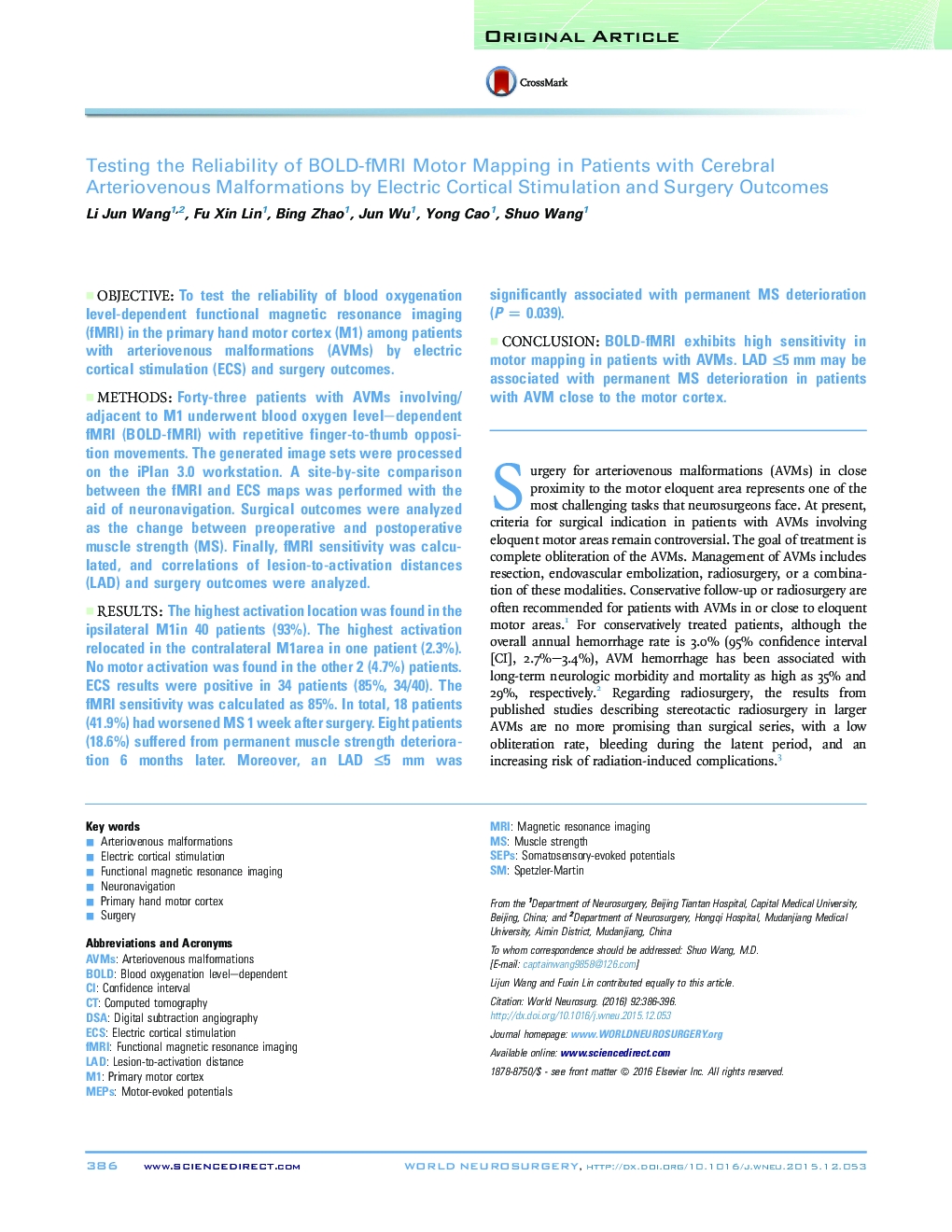| Article ID | Journal | Published Year | Pages | File Type |
|---|---|---|---|---|
| 3094724 | World Neurosurgery | 2016 | 11 Pages |
ObjectiveTo test the reliability of blood oxygenation level-dependent functional magnetic resonance imaging (fMRI) in the primary hand motor cortex (M1) among patients with arteriovenous malformations (AVMs) by electric cortical stimulation (ECS) and surgery outcomes.MethodsForty-three patients with AVMs involving/adjacent to M1 underwent blood oxygen level–dependent fMRI (BOLD-fMRI) with repetitive finger-to-thumb opposition movements. The generated image sets were processed on the iPlan 3.0 workstation. A site-by-site comparison between the fMRI and ECS maps was performed with the aid of neuronavigation. Surgical outcomes were analyzed as the change between preoperative and postoperative muscle strength (MS). Finally, fMRI sensitivity was calculated, and correlations of lesion-to-activation distances (LAD) and surgery outcomes were analyzed.ResultsThe highest activation location was found in the ipsilateral M1in 40 patients (93%). The highest activation relocated in the contralateral M1area in one patient (2.3%). No motor activation was found in the other 2 (4.7%) patients. ECS results were positive in 34 patients (85%, 34/40). The fMRI sensitivity was calculated as 85%. In total, 18 patients (41.9%) had worsened MS 1 week after surgery. Eight patients (18.6%) suffered from permanent muscle strength deterioration 6 months later. Moreover, an LAD ≤5 mm was significantly associated with permanent MS deterioration (P = 0.039).ConclusionBOLD-fMRI exhibits high sensitivity in motor mapping in patients with AVMs. LAD ≤5 mm may be associated with permanent MS deterioration in patients with AVM close to the motor cortex.
